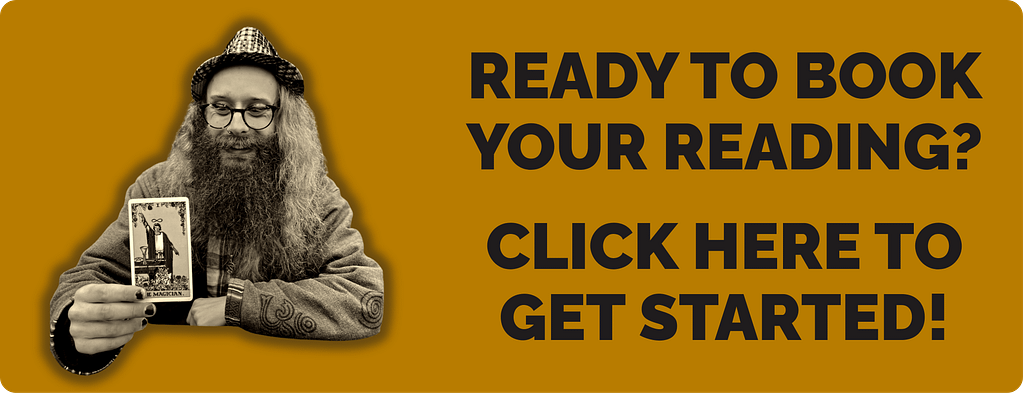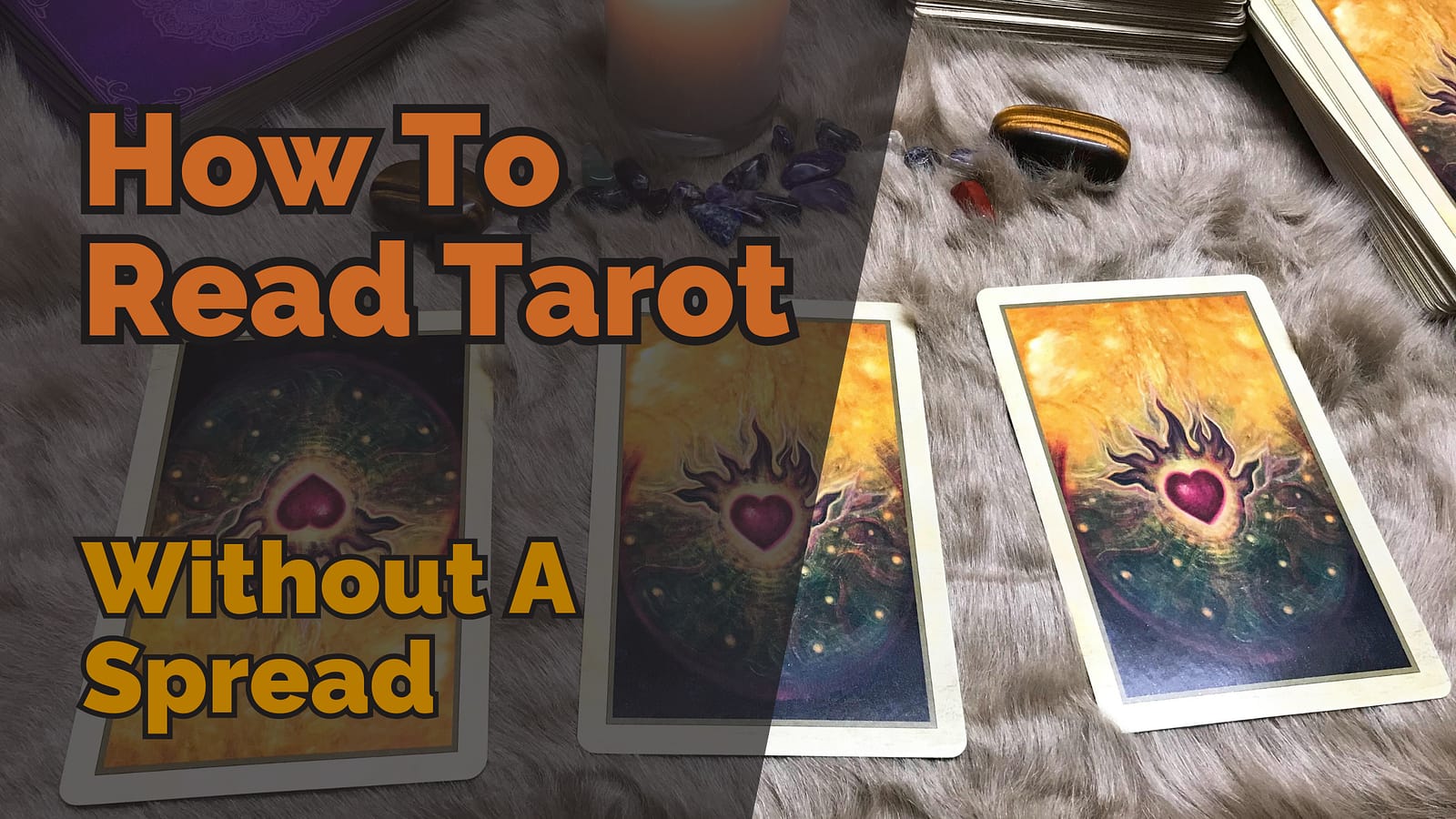
Table of Contents
The Death card is the one that makes people gasp. Flip it in a reading, and the tension shifts immediately. It is the card that carries centuries of fear, superstition, and Hollywood exaggeration. The name alone feels final. People see it and wonder if it means something terrible is about to happen.
So, does Death mean death in tarot? Not in the way most people expect. The Death card is rarely, if ever, about literal death. Instead, it speaks to endings, transformation, and legacy. It is not a prediction of doom but an invitation to let go of what has run its course. When we release, we create space for something new to be born. Death is compost, not catastrophe.
This is why it matters. The Death card is one of the most misunderstood cards in the deck, yet it carries some of the deepest wisdom about life. It shows us that endings are not enemies but part of the natural flow of existence. In this post, we’ll explore how the card has been misrepresented in culture, what the tarot Death card meaning really is, and what it can teach us about cosmic cycles, soil, mortality, and even the Tower.
Why the Death Card Scares Us
Death on Screen

My first encounter with the Death card was watching Tracy Beaker when I was a child. Or at least, I thought it was. The characters called it the Death card, but when I was looking back in preparation for this post, I realised the image shown on screen was actually the Ten of Swords. That says everything about how tarot is usually handled in TV and film. It is less about accuracy and more about creating drama. The Death card becomes a prop, a plot twist, or a horror gimmick.
This lazy approach is everywhere. Horror films roll it out for a jump scare. Fortune teller caricatures use it to spook their clients. The card is reduced to a symbol of doom. These portrayals stick with people, so when they see the Death card in real life, they bring all that baggage into the reading.
The Problem With These Portrayals
It might seem harmless, but it matters. Every time the Death card is presented as a curse, it fuels fear and misunderstanding. People panic before they even know what the card is actually about. Readers are left spending their time undoing myths instead of exploring meaning.
These portrayals also reinforce harmful stereotypes. The figure of the Romani fortune teller, draped in scarves and crystal balls, has been recycled endlessly in popular culture. It exoticises and misrepresents a culture while flattening tarot into melodrama. Instead of an honest mirror for reflection, tarot becomes a cartoon of itself.
Soap Opera Tarot

Oddly enough, one of the most accurate portrayals I have seen was on EastEnders. Mo Harris, dressed as the stereotypical fortune teller, pulled the Death card for Billy Mitchell and declared doom. But then Charlie Slater, her son-in-law, stepped in. He said, almost offhandedly, that the card could mean change. That is far closer to the truth. Death is not about literal death, but about things that must end so that something else can begin.
It is ironic that the soap got it more right than most films, even if the accuracy came not from the “reader” but from a side character. Still, the scene carried the same problem as every other portrayal: it wrapped truth inside stereotype and spectacle.
What the Death Card Really Means
Endings as Invitations
So does Death mean death in tarot? No. The death card’s meaning is about endings that open doors. Something in your life has reached its conclusion. It could be a relationship, a job, a phase, or an old habit. The card asks you to release it. Clinging on will not bring it back to life. Letting go turns endings into fertile compost for what comes next.
Death is not cruel. It is honest. It shows us what we already know deep down: this cannot continue. The invitation is to accept that truth and create space for renewal.
Transformation in the Symbols
The imagery of the Death card makes this clearer. In the Fifth Spirit Tarot, you see not just a reaper but also a parent breastfeeding a baby. The moons cycle overhead. A snake sheds its skin. Butterflies emerge from cocoons.
Each image tells the same story: endings and beginnings are inseparable. The caterpillar dissolves to become the butterfly. The moon disappears before it returns full again. Shedding is not death but growth. The death tarot card meaning is transformation woven into the fabric of life.
Change as the Only Constant
The tarot Death card meaning does not sugarcoat. It points to the raw truth that everything changes. Life moves in cycles, and no stage lasts forever. This is why the Death card can feel confronting. It forces us to face the reality that nothing stays the same. Yet in that honesty lies freedom. When we stop resisting change, we can work with it.
Death as a Cosmic and Earthly Pattern
Nothing Truly Disappears

If you step back far enough, the whole universe preaches the same message. From the Big Bang onwards, matter has never stopped changing. Stars explode and scatter their elements across galaxies. Planets form and dissolve. Nothing vanishes. Everything transforms.
The Death card mirrors this law of existence. It is not an anomaly. It is the pattern. Death is how the universe makes space for what comes next.
When We Refuse Endings
The danger comes when we try to escape this pattern. Plastics are the perfect example. They were designed not to decompose, and now they choke the planet. Immortality sounds like a gift, but in reality, it blocks renewal. Without endings, there is no balance. What cannot die, poisons.
The tarot Death card meaning reminds us that resistance creates suffering. To live in flow with life, we need to let things end.
The Soil We Leave Behind
I once had a houseplant that died, and I assumed I had killed it by neglect. A friend suggested the problem was the soil. That sent me into research. Healthy plants that die enrich the soil, releasing nutrients and even scattering seeds. Diseased plants, though, pass their sickness into the soil, making it harder for new life to thrive.
That metaphor hit me hard. Endings are never neutral. They always leave something behind. The soil remembers. The question the Death card asks is: when this ends, what are you leaving for what comes next? Are you enriching the soil, or poisoning it?
What the Death Card Teaches About Mortality
Facing Our Own Death
Does death mean death in tarot? Not literally. Tarot will not tell you when your life will end. But the card does remind us that it will happen. That reminder is not meant to terrify. It is meant to wake us up. Mortality makes life more precious.
Facing death honestly can be liberating. It helps us focus on what matters. It draws us into the present. It calls us to live with intention.
Ripple in the Pond

I often picture life as a ripple in a pond. My ripple will eventually fade, but the pond continues. The water does not disappear. It keeps moving, carrying the effects of the ripple onward. That is how I think of legacy. Consciousness ends, but the matter that made me continues in other forms. My influence, however small, ripples out.
The tarot death card meaning points us toward this truth. We are not isolated from the whole. Our endings are folded into the ongoing story.
Living So It Matters
We cannot control the timing of our deaths, but we can shape what we leave behind. Legacy does not have to mean monuments or fame. It can be kindness, love, or the ways we have made a difference to those around us. These are the ripples that last.
The death card legacy is about living in such a way that when our ripple fades, the pond is more beautiful for having carried us.
Death and the Tower
Endings With Grace
The death card tarot meaning is an invitation to end things well. It asks us to consider not only what is ending, but how we choose to end it. Composting what no longer serves with respect creates fertile ground for renewal. Meeting endings with awareness allows us to shape what they leave behind. This can mean closing a chapter in a relationship with honesty rather than bitterness, or leaving a job with gratitude rather than resentment. Death teaches us that endings can be held with dignity.
When we see endings in this light, we begin to notice how much power we have in shaping the aftermath. It is not about pretending endings are painless. It is about choosing how to carry them and what we leave in the soil for whatever grows next.
When Endings Are Forced
If we resist, tarot has another card waiting: the Tower. The Tower represents sudden collapse, endings that come crashing down without warning. It is demolition rather than compost, shock instead of surrender. Where Death offers us the chance to release gradually, the Tower rips it from our hands.
We know this feeling in real life. It is the breakup we did not see coming, the job loss without notice, the health crisis that blindsides us. The Tower reminds us that clinging to what is over does not preserve it; it only invites upheaval.
Why Death Is the Kinder Teacher
Both cards are about endings, but one carries far more compassion. Death gives us choice, grace, and the opportunity to participate in the transition. The Tower gives us chaos and upheaval. The wisdom is to embrace Death first, to accept change before it forces itself through destruction. By leaning into endings willingly, we learn to compost with care rather than be left in the rubble.
So, Does Death Mean Death in Tarot?
In the end, the Death card does not predict literal death. It calls us to see endings as part of life’s rhythm, to meet them with honesty and dignity, and to recognise what they make possible. Death is not the final curtain but a turning of the page. By embracing it, we learn how to live more fully and leave behind soil rich enough for something new to grow.
It is a reminder that change is not an enemy but the natural pulse of existence. When we welcome it, we find renewal instead of fear.
Perhaps most importantly, the Death card shows us that endings are not final at all. They are the very mechanism through which life renews itself again and again. This is the gift of the Death card: to remind us that in every ending there is also a beginning, and in every closure, a seed for what comes next.
If you want to explore how tarot can help you face change and find renewal in your own life, consider booking a reading with me. Together, we can work with the cards to uncover what is ending for you, what is ready to be released, and what new beginnings are waiting to take root.





